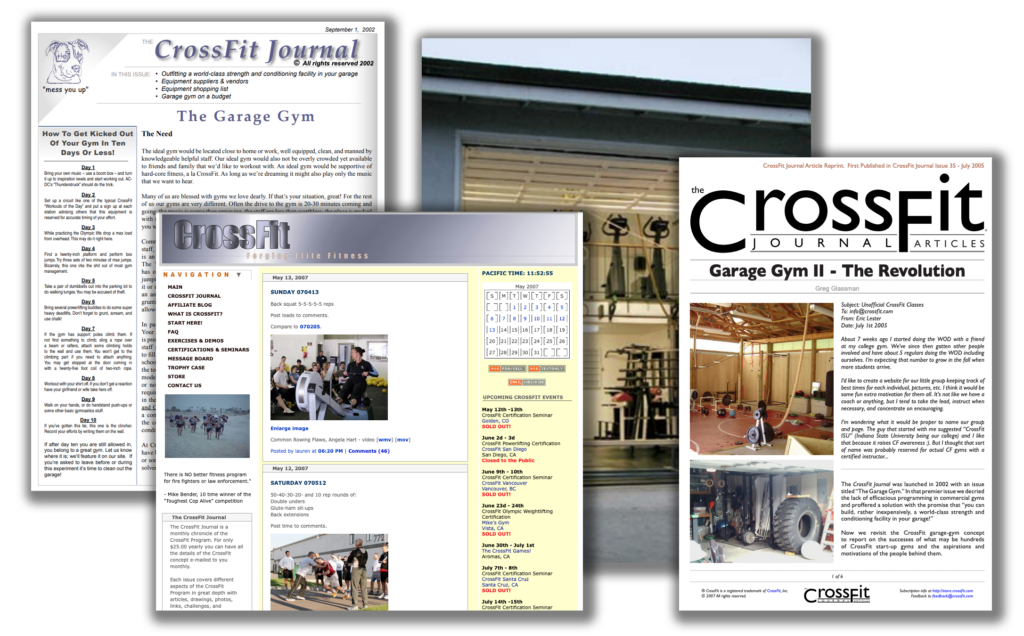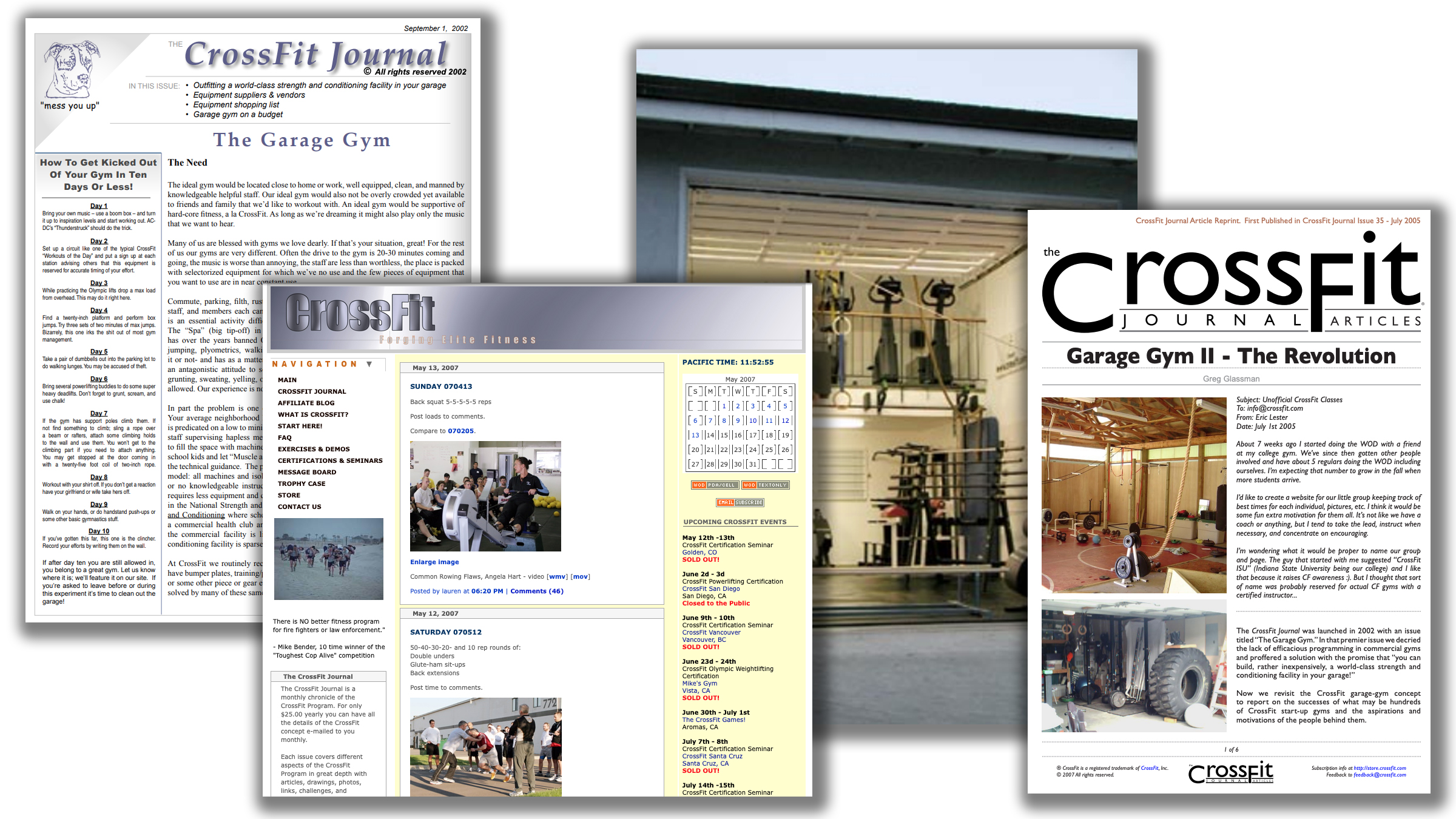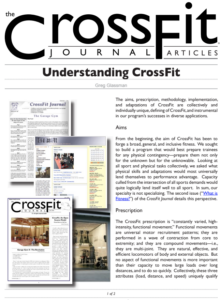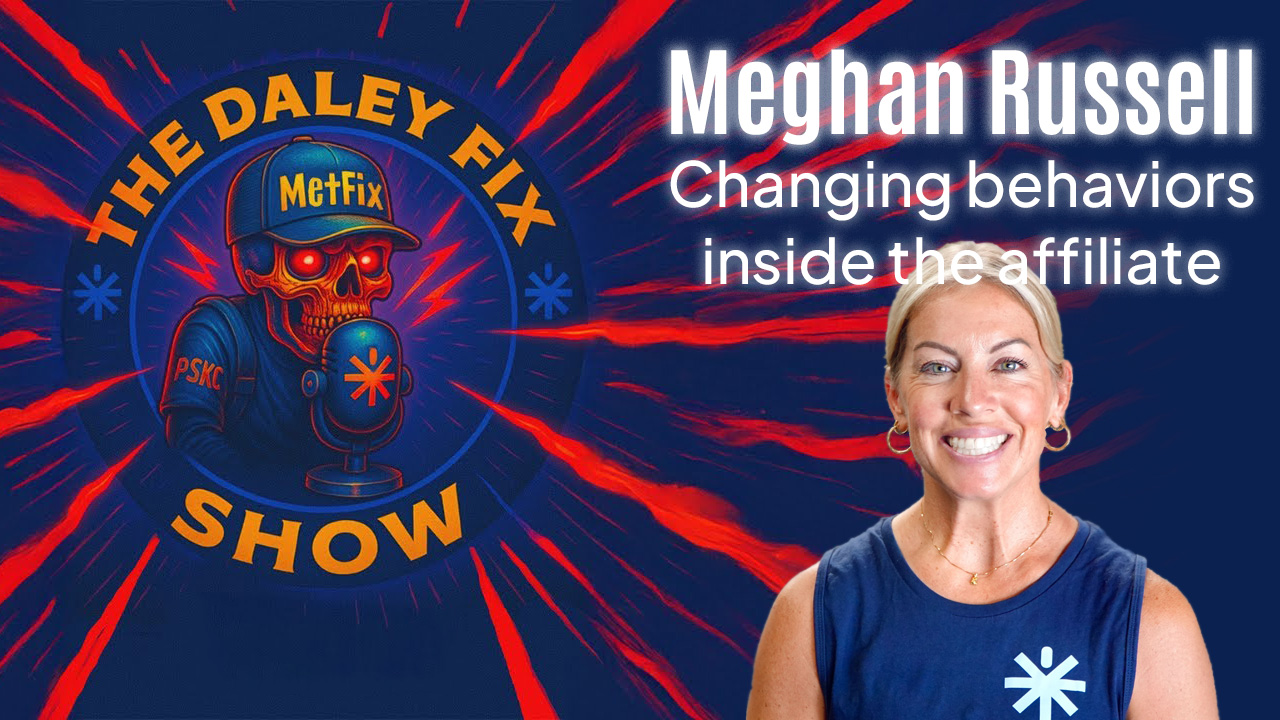By Greg Glassman
This article, by BSI’s co-founder, was originally published in The CrossFit Journal. While Greg Glassman no longer owns CrossFit Inc., his writings and ideas revolutionized the world of fitness, and are reproduced here.
Coach Glassman named his training methodology ‘CrossFit,’ which became a trademarked term owned by CrossFit Inc. In order to preserve his writings in their original form, references to ‘CrossFit’ remain in this article.
Download a pdf of the original article HERE.
The aims, prescription, methodology, implementation and adaptations of CrossFit are collectively and individually unique, defining of CrossFit, and instrumental in our program’s successes in diverse applications.

Aims
From the beginning, the aim of CrossFit has been to forge a broad, general and inclusive fitness. We sought to build a program that would best prepare trainees for any physical contingency—prepare them not only for the unknown but for the unknowable. Looking at all sport and physical tasks collectively, we asked what physical skills and adaptations would most universally lend themselves to performance advantage. Capacity culled from the intersection of all sports demands would quite logically lend itself well to all sport. In sum, our specialty is not specializing. The second issue (“What Is Fitness?”) of the CrossFit Journal details this perspective.
Prescription
The CrossFit prescription is “constantly varied, high-intensity, functional movement.” Functional movements are universal motor recruitment patterns; they are performed in a wave of contraction from core to extremity; and they are compound movements—i.e., they are multi-joint. They are natural, effective and efficient locomotors of body and external objects. But no aspect of functional movements is more important than their capacity to move large loads over long distances, and to do so quickly. Collectively, these three attributes (load, distance and speed) uniquely qualify functional movements for the production of high power. Intensity is defined exactly as power, and intensity is the independent variable most commonly associated with maximizing favorable adaptation to exercise. Recognizing that the breadth and depth of a program’s stimulus will determine the breadth and depth of the adaptation it elicits, our prescription of functionality and intensity is constantly varied. We believe that preparation for random physical challenges—i.e., unknown and unknowable events—is at odds with fixed, predictable and routine regimens.
Methodology
The methodology that drives CrossFit is entirely empirical. We believe that meaningful statements about safety, efficacy and efficiency, the three most important and interdependent facets of any fitness program, can be supported only by measurable, observable, repeatable facts, i.e., data. We call this approach “evidence-based fitness.” The CrossFit methodology depends on full disclosure of methods, results and criticisms, and we’ve employed the internet (and various intranets) to support these values. Our charter is open source, making co-developers out of participating coaches, athletes, and trainers through a spontaneous and collaborative online community. CrossFit is empirically driven, clinically tested and community developed.
Implementation
In implementation, CrossFit is, quite simply, a sport—the “sport of fitness.” We’ve learned that harnessing the natural camaraderie, competition and fun of sport or game yields an intensity that cannot be matched by other means. The late Col. Jeff Cooper observed that “the fear of sporting failure is worse than the fear of death.” It is our observation that men will die for points. Using whiteboards as scoreboards, keeping accurate scores and records, running a clock, and precisely defining the rules and standards for performance, we not only motivate unprecedented output but derive both relative and absolute metrics at every workout; this data has important value well beyond motivation.
Adaptations
Our commitment to evidence-based fitness, publicly posting performance data, co-developing our program in collaboration with other coaches and our open-source charter in general has well positioned us to garner important lessons from our program—to learn precisely and accurately, that is, about the adaptations elicited by CrossFit programming. What we’ve discovered is that CrossFit increases work capacity across broad time and modal domains. This is a discovery of great import and has come to motivate our programming and refocus our efforts. This far-reaching increase in work capacity supports our initially stated aims of building a broad, general and inclusive fitness program. It also explains the wide variety of sport demands met by CrossFit as evidenced by our deep penetration among diverse sports and endeavors. We’ve come to see increased work capacity as the holy grail of performance improvement and all other common metrics like VO2 max, lactate threshold, body composition, and even strength and flexibility as being correlates—derivatives, even. We’d not trade improvements in any other fitness metric for a decrease in work capacity.
Conclusions
The modest start of publicly posting our daily workouts on the internet beginning six years ago has evolved into a community where human performance is measured and publicly recorded against multiple, diverse and fixed workloads. CrossFit is an open-source engine where inputs from any quarter can be publicly given to demonstrate fitness and fitness programming, and where coaches, trainers and athletes can collectively advance the art and science of optimizing human performance.
- Download Original PDF
- Download Español (Spanish) PDF
- Download Português (Portuguese) PDF
- Download Italiano (Italian) PDF
- Download Français (French) PDF
Greg Glassman founded CrossFit, a fitness revolution. Under Glassman’s leadership there were around 4 million CrossFitters, 300,000 CrossFit coaches and 15,000 physical locations, known as affiliates, where his prescribed methodology: constantly varied functional movements executed at high intensity, were practiced daily. CrossFit became known as the solution to the world’s greatest problem, chronic illness.
In 2002, he became the first person in exercise physiology to apply a scientific definition to the word fitness. As the son of an aerospace engineer, Glassman learned the principles of science at a young age. Through observations, experimentation, testing, and retesting, Glassman created a program that brought unprecedented results to his clients. He shared his methodology with the world through The CrossFit Journal and in-person seminars. Harvard Business School proclaimed that CrossFit was the world’s fastest growing business.
The business, which challenged conventional business models and financially upset the health and wellness industry, brought plenty of negative attention to Glassman and CrossFit. The company’s low carbohydrate nutrition prescription threatened the sugar industry and led to a series of lawsuits after a peer-reviewed journal falsified data claiming Glassman’s methodology caused injuries. A federal judge called it the biggest case of scientific misconduct and fraud she’d seen in all her years on the bench. After this experience Glassman developed a deep interest in the corruption of modern science for private interests. He launched CrossFit Health which mobilized 20,000 doctors who knew from their experiences with CrossFit that Glassman’s methodology prevented and cured chronic diseases. Glassman networked the doctors, exposed them to researchers in a variety of fields and encouraged them to work together and further support efforts to expose the problems in medicine and work together on preventative measures.
In 2020, Greg sold CrossFit and focused his attention on the broader issues in modern science. He’d learned from his experience in fitness that areas of study without definitions, without ways of measuring and replicating results are ripe for corruption and manipulation.
The Broken Science Initiative, aims to expose and equip anyone interested with the tools to protect themself from the ills of modern medicine and broken science at-large.
Support the Broken Science Initiative.
Subscribe today →




